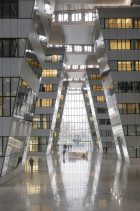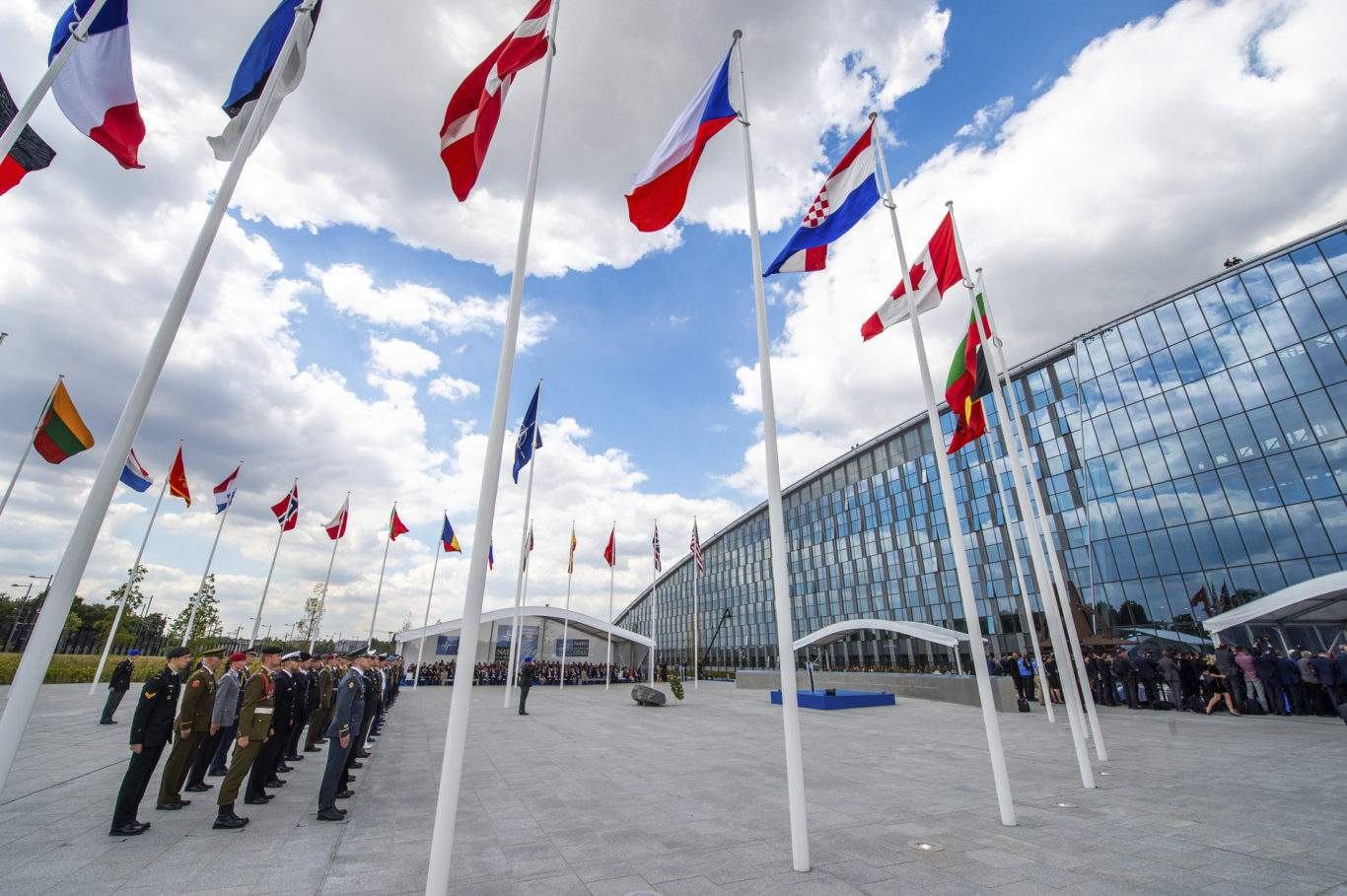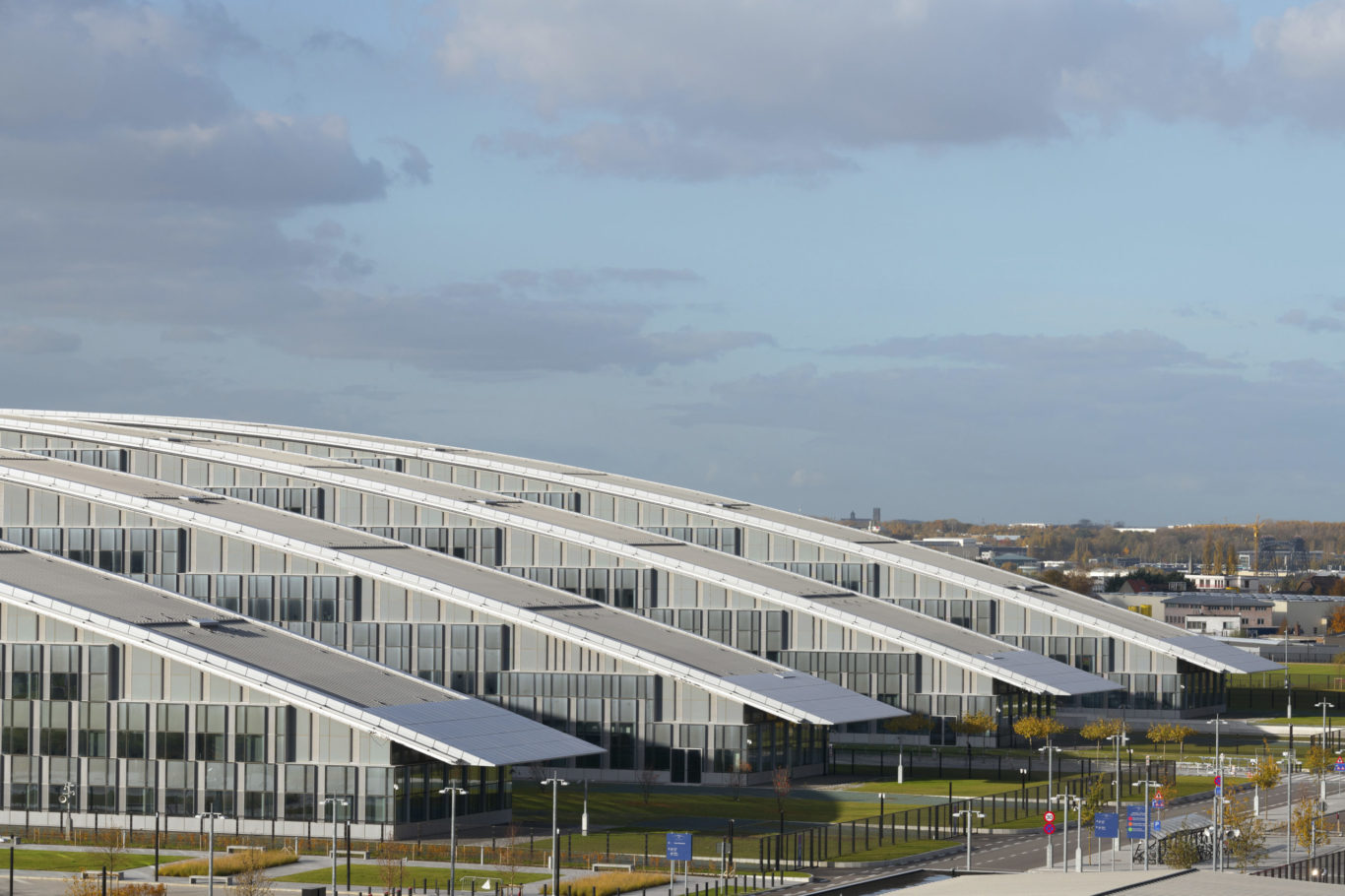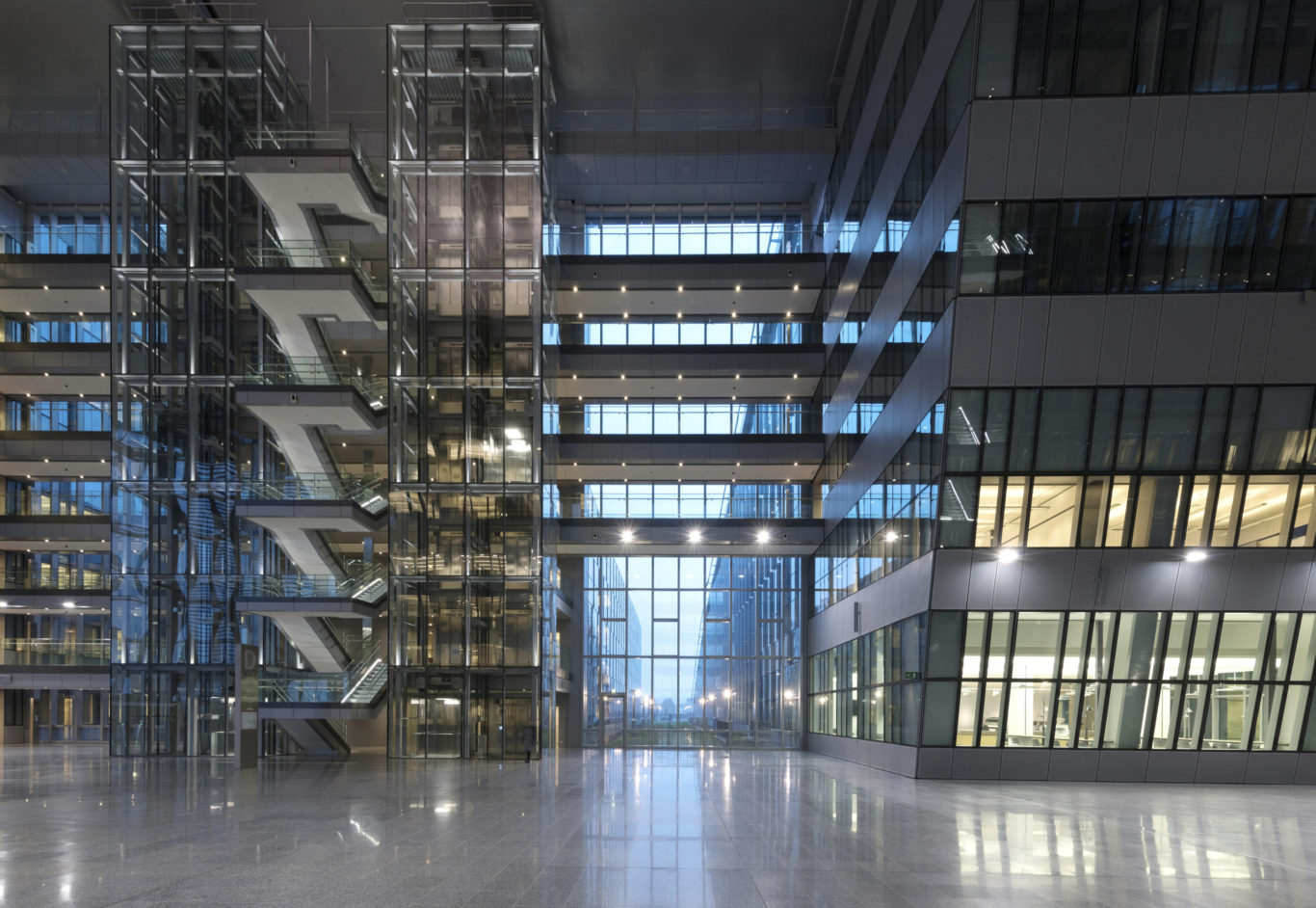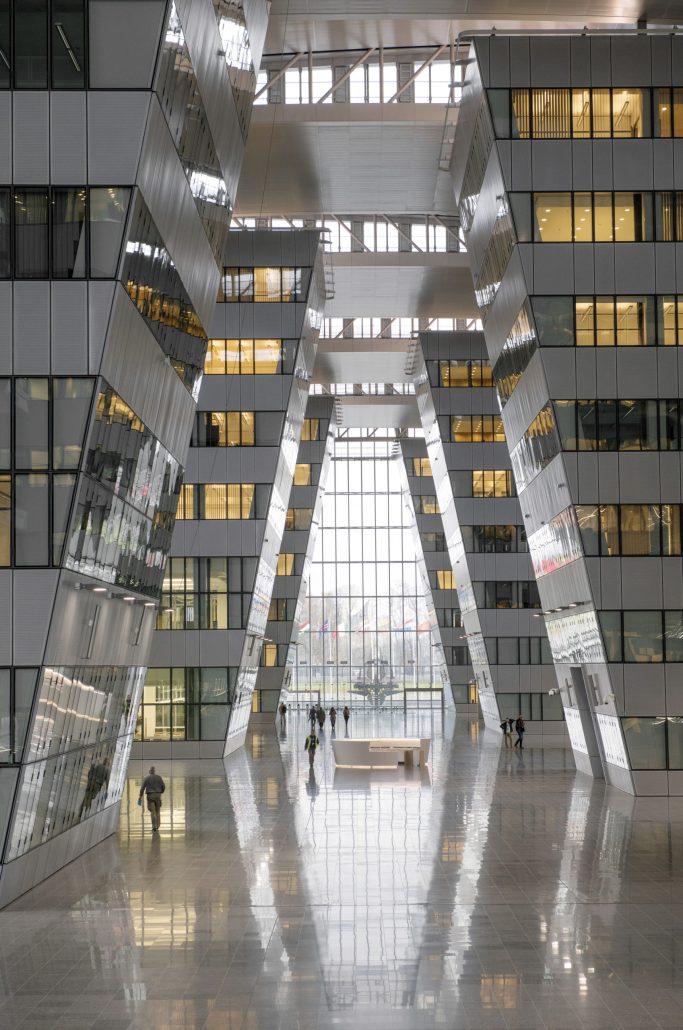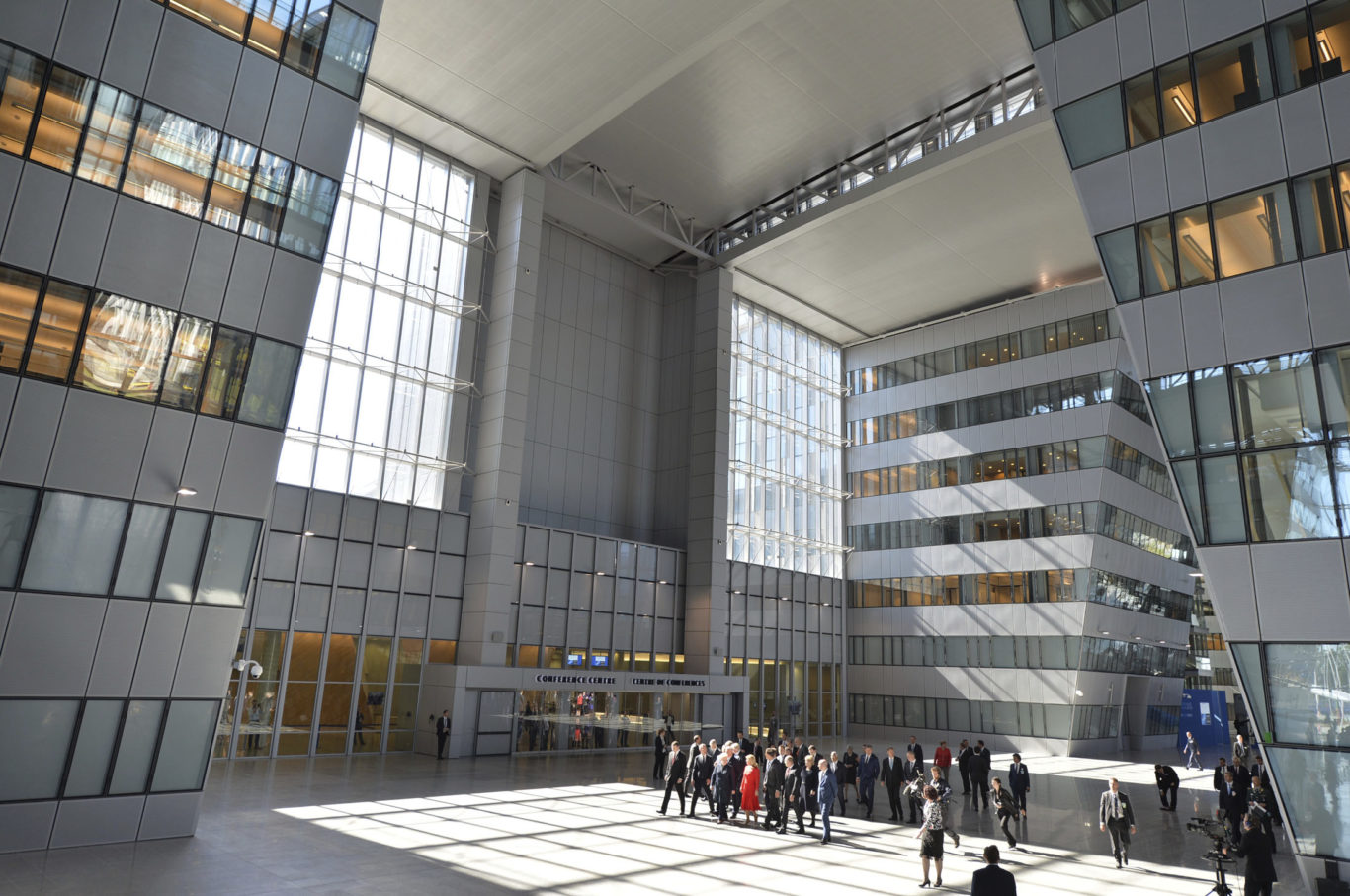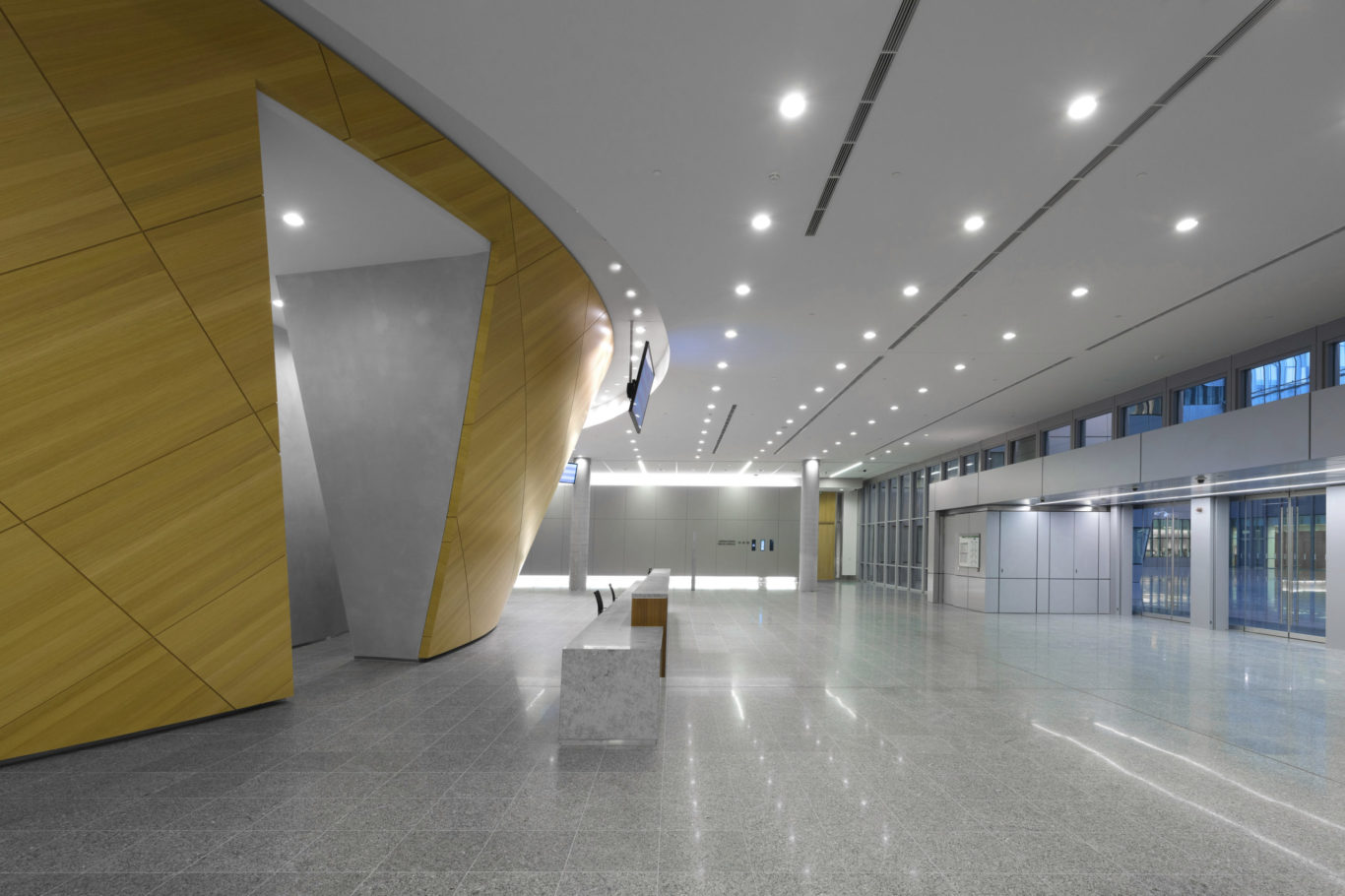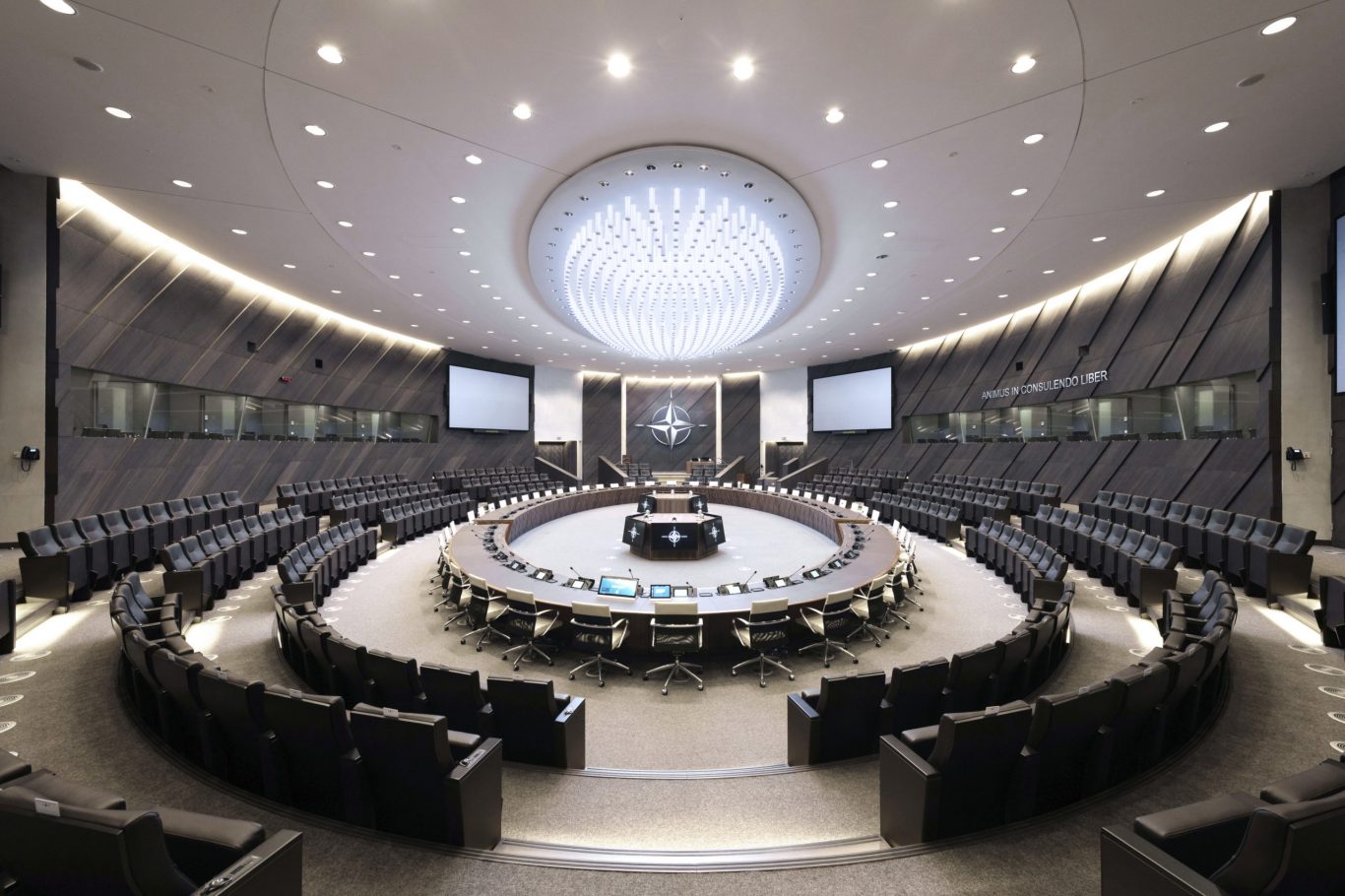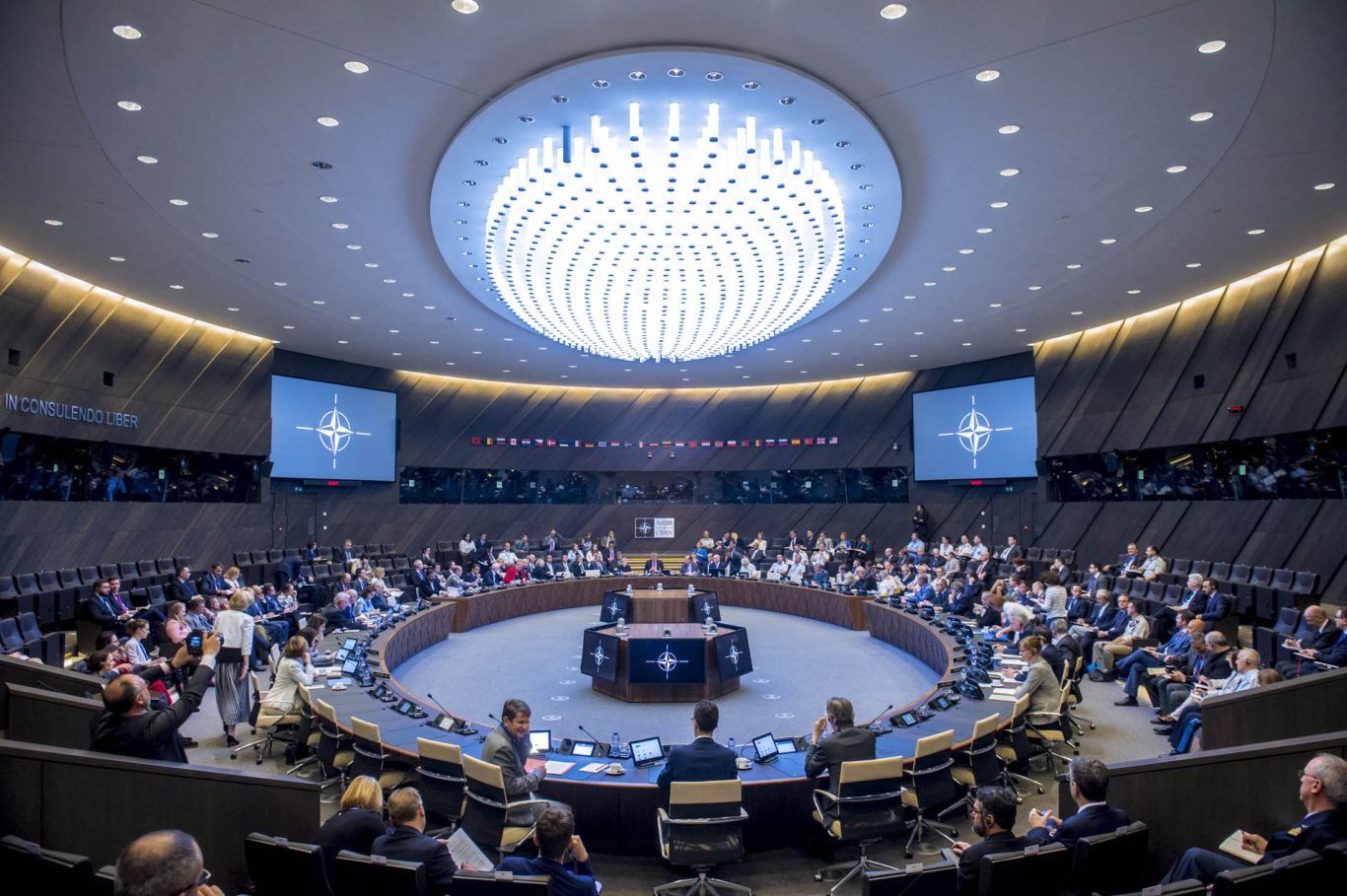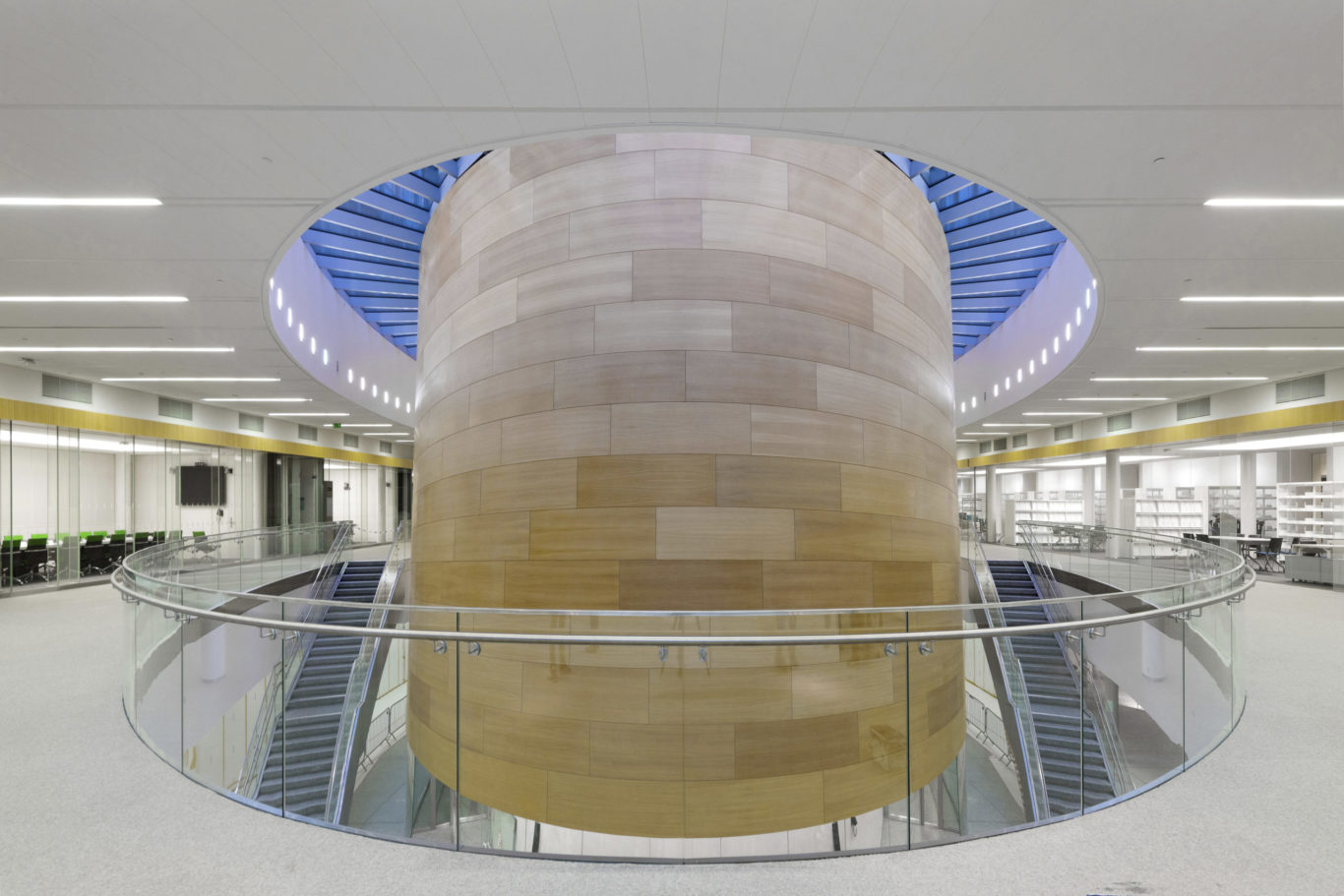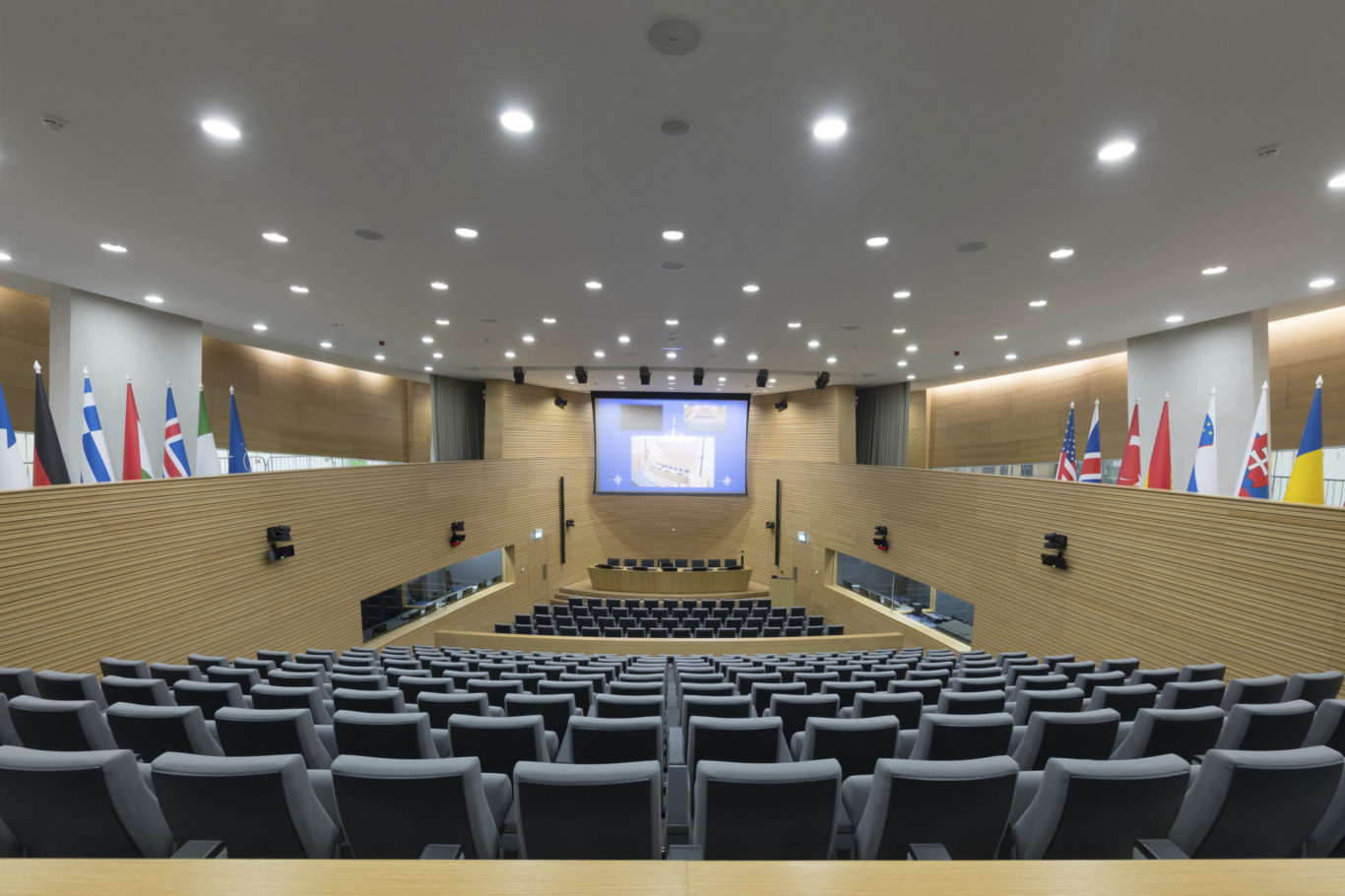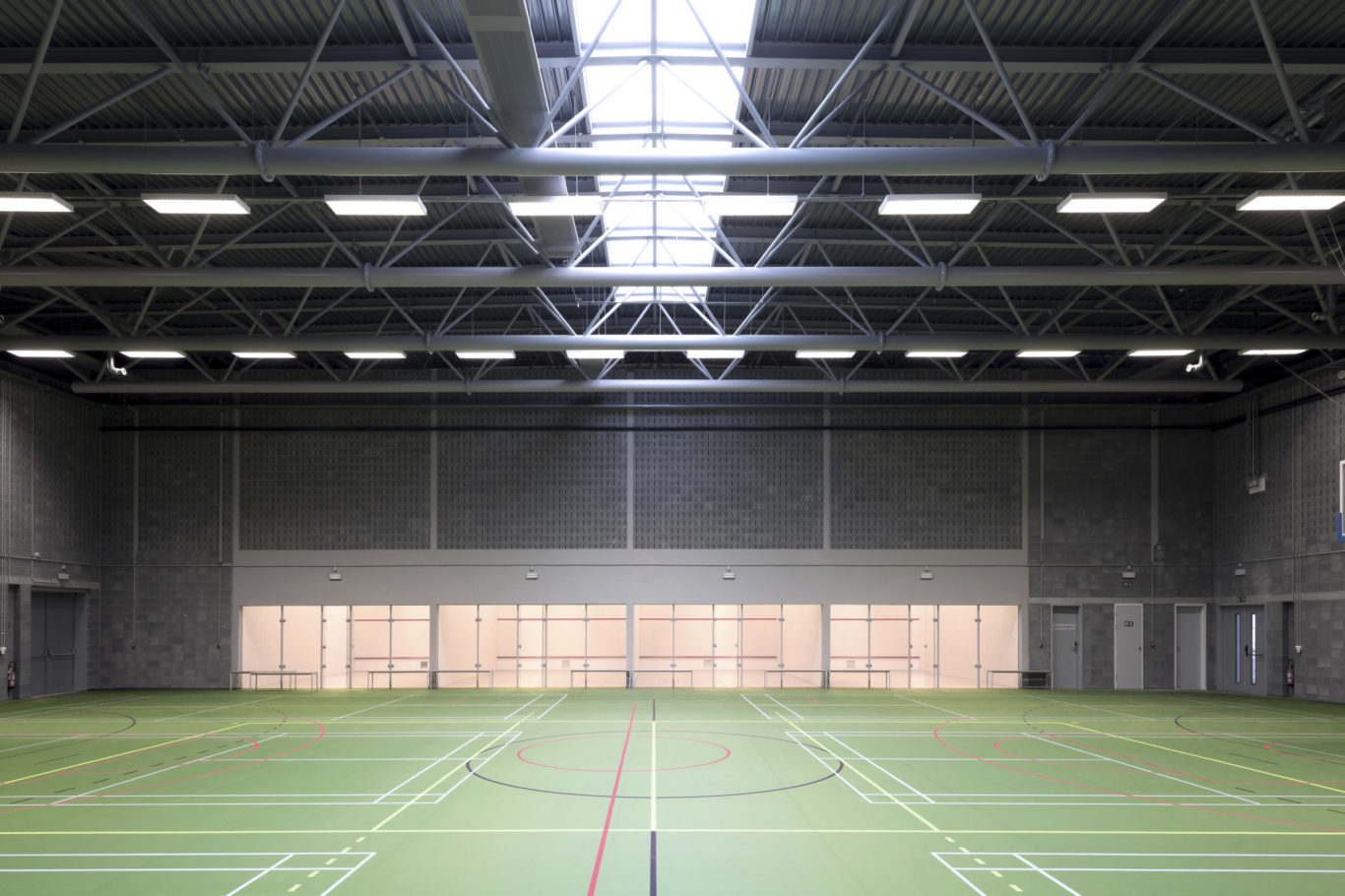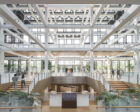Architecture for a new era of diplomacy
The North Atlantic Council decided at the 1999 Washington Summit to replace NATO’s headquarters, which had been in use since 1967. Due to a significant rise in memberships over the years, the organization was relying partially on temporary structures to meet its needs for office space. An ensuing architectural competition was based around the ideas of flexibility, functionality, security, and sustainability.
SOM’s design proposal, selected in 2003, represents NATO’s growing focus on unification and integration in the 21st century. The campus is located on what was Belgium’s first airfield, which was occupied by German forces in 1915 and again during World War II by German and Allied forces. NATO’s peace-driven ambitions are represented through the building’s eight long and four short office wings (seven floors in the long wings, four in the short) intersecting with a central atrium—like fingers interlaced in a symbolic clasp of unity and interdependence. The atrium provides visibility for the office wings and serves as transitional space to common areas, such as the conference centre and staff canteen.


